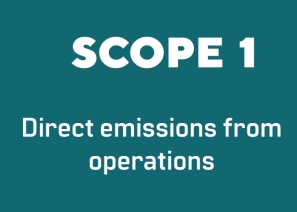Scope 1 emissions are direct emissions from business operations and include emissions from the combustion of fuels in stationary equipment, such as boilers, furnaces, turbines, or heaters; emissions from the combustion of fuels in mobile sources, such as cars, trucks, buses, motorcycles, airplanes, or ships; emissions from intentional or unintentional releases of gases, such as refrigerants, fire suppressants, or industrial gases and the emissions from physical or chemical processes, such as calcination, fermentation, or waste incineration. Scope 1 emissions are the most controllable emissions for a business. Reducing scope 1 emissions can have a significant impact on a business’s GHG footprint and operational efficiency. Some of the strategies to reduce Scope 1 emissions are:
• Switching to cleaner fuels: Replacing fossil fuels with renewable or low-carbon fuels can reduce the GHG intensity of fuel combustion. For example, using biodiesel or biogas instead of diesel or natural gas can lower the carbon content of the fuel.
• Improving energy efficiency: Implementing energy-saving measures and technologies can reduce the amount of fuel needed to power operations. For example, installing insulation or LED lighting can reduce heat loss or electricity consumption.
• Optimizing processes: Improving process design and management can reduce the amount of GHG emissions generated by chemical reactions or other activities. For example, using alternative raw materials or catalysts can lower the GHG intensity of production processes.
• Capturing and storing emissions: Capturing and storing GHG emissions before they are released into the atmosphere can prevent them from contributing to global warming. For example, using carbon capture and storage (CCS) technologies can capture CO2 from flue gases or industrial processes and store it underground or in other reservoirs.
Do you need help with developing an emission reduction strategy for Scope 2, contact me using the form below.
CONTACT
